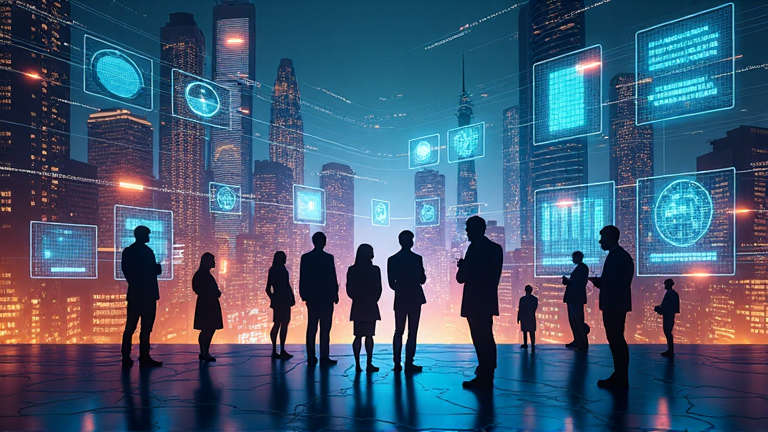
Exploring Key GenAI Trends for 2025
Strategic Impacts on Organizations
The evolution from experimental to practical applications of generative AI (GenAI) marks a pivotal year for businesses in 2025. Generative AI is no longer confined to trial phases; organizations are now primed to realize tangible benefits from their investments. A notable survey by Boston Consulting Group highlighted that 75% of 1,803 C-level executives view AI and GenAI among their top strategic priorities for 2025. Furthermore, budgets dedicated to GenAI are set to rise markedly. According to a recent BCG survey, IT spending on GenAI will increase from 4.7% in 2025 to 7.6% by 2027.
Key GenAI Trends to Watch
1. Demand for ROI on GenAI Investments
Businesses have shifted from exploratory phases to a results-driven focus on generative AI projects. As organizations seek clear returns on investment (ROI), GenAI is transitioning into an essential service akin to infrastructure purchases. Research indicates that 74% of companies currently using GenAI report ROI gains, with anticipated advances in employee productivity and user satisfaction.
2. Embracing a Bottom-Up Approach
While executives drive GenAI initiatives, unlocking its potential often lies in empowering everyday employees. Workers' direct engagement with GenAI tools facilitates accelerated task completion and innovation, highlighting the necessity of a decentralized approach to technology implementation.
3. Democratization of Programming Skills
Generative AI enables a shift where everyday employees can use natural language to create technological solutions, effectively making programming accessible to non-programmers. Educating the workforce on GenAI’s possibilities will enhance operational efficiency and broaden its application.
4. Building Trust in GenAI Systems
The integration of GenAI systems within organizations mandates the cultivation of trust. Transparency, explainability, and accountability are pivotal in maintaining fair, accurate, and unbiased GenAI systems. Continuous system monitoring fortifies these principles, ensuring sustained stakeholder confidence.
5. Expansion of Customized GenAI Applications
Organizations are moving towards tailored GenAI applications, diverging from generic, plug-and-play solutions. This trend sees the rise of vertical-specific models trained on unique data, such as those bei ng used in financial firms to assist in investment decisions.
6. Rise of Agentic AI
The deployment of autonomous GenAI systems, or agentic AI, which function independently, is becoming more prevalent. This trend promises to enhance AI autonomy and materialize across various business functions, particularly as companies seek to scale AI capabilities.
7. Growth of Multimodal Models
The adoption of GenAI that supports various data types—text, images, video, and audio—ushers in an era of multimodal models. Predictions suggest that by 2027, 40% of GenAI offerings will harness this capability, offering immersive and comprehensive data interactions.
8. Need for Responsible AI
As GenAI permeates organizations, implementing responsible AI principles remains crucial for ethical technology use. Despite high endorsement from executives, challenges such as regulatory compliance and operational risks persist in responsible AI deployment.
9. Fragmented Regulatory Environment
Global AI regulations are diverse, requiring organizations to adapt their strategies to comply with varying regional laws. This complexity necessitates the development of multiple GenAI programs to meet distinct regulatory requirements.
10. Cybersecurity Implications of GenAI
While GenAI aids in cybersecurity through improved threat detection and response, it also poses unique risks. Threat actors can exploit GenAI models, compelling organizations to bolster defenses against such threats proactively.
Innovations and Tools to Harness
2025 boasts a diverse array of GenAI tools, enhancing and expanding its applications:
- AI Chip Makers: Nvidia stands out as a leading developer of AI hardware and software solutions.
- Claude: A GenAI chatbot developed by Anthropic, aimed at creating responsible AI systems.
- Data Platforms: Companies like Databricks, Hugging Face, and Snowflake offer platforms essential for managing and analyzing the extensive data needed for GenAI.
- Enterprise Software Vendors: They now integrate GenAI features into their solutions, facilitating seamless adoption.
- Hyperscalers: AWS, Google Cloud, and Microsoft Azure provide the immense computational power required for GenAI advancements.
- Open Source GenAI: This alternative fosters collaboration and innovation, exemplified by Mistral AI and Stability AI's Stable Diffusion.
Note: This publication was rewritten using AI. The content was based on the original source linked above.